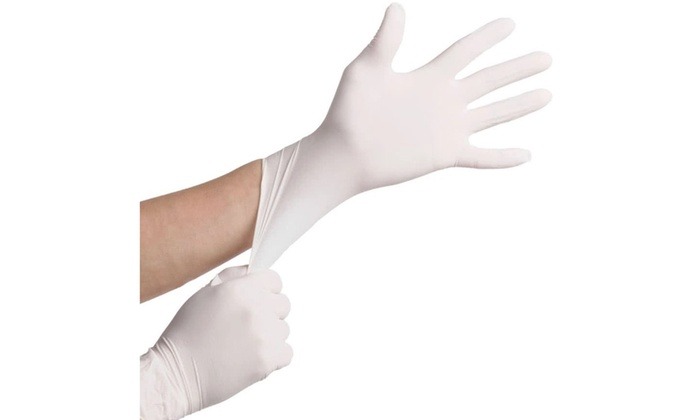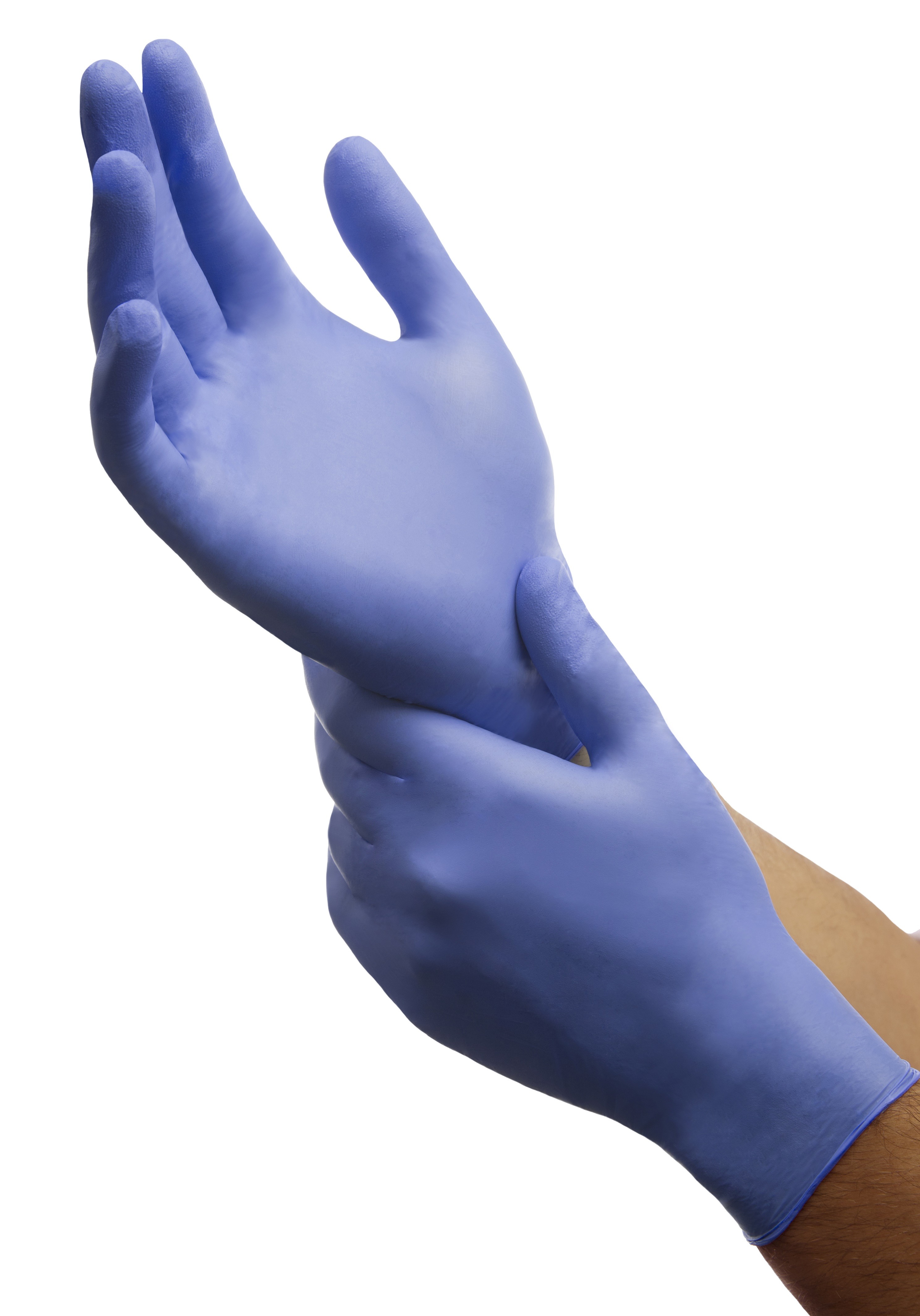Food Prep Gloves Buying Guide
Food Prep Gloves Buying Guide: How To Choose The Right Disposable Gloves For Food Preparation & Food Service
Whenever you’re working with ready-to-eat food in a commercial kitchen, wearing gloves is a standard sanitary precaution that keeps you and your customers safe. In fact, in some localities, it may even be legally required! Protect your kitchen staff and your customers from cross-contamination with the right food preparation gloves. In this article we’ll discuss four different kinds of food service gloves, all of them food-safe and FDA approved. Compare them all using the table below and determine which gloves are right for you.
Are Latex, Vinyl & Nitrile Gloves Food-Safe? Yes! Gloves made using these materials can be FDA accepted for food contact.
 Latex Gloves
Latex Gloves
Price: $$$
Durability: ✔✔
Elasticity: ✔✔✔
Feel: ✔✔✔
Protection: ✔
Food-Safe: Yes
Hypoallergenic: No
Latex gloves are made from a natural rubber, giving them superior stretchiness to just about any other glove material available. That means you get an tight yet comfortable fit around the wrist and fingertips. Latex gloves can be very thin while still maintaining strength which also helps provide good tactile feel in your fingers. That’s why those who can wear latex gloves often prefer latex while prepping food in the kitchen.
However, it’s important to be aware that some individuals may develop an allergic reaction to the proteins found in latex gloves. This can lead to a rash on your hands. According to the Allergy & Asthma Network, up to 6% of the general population may have a latex allergy. What’s more, latex will tend to break down when exposed to certain chemicals and oils, so they may not provide sufficient protection when working with acidic, oily, or spicy ingredients. In the right situations, latex gloves are still a popular choice.
 Vinyl Gloves
Vinyl Gloves
Price: $
Durability: ✔
Elasticity: ✔
Feel: ✔✔
Protection: ✔
Food-Safe: Yes
Hypoallergenic: Yes
Vinyl gloves are an affordable option that don’t have the allergen drawback of latex gloves. They’re quite thin which helps users maintain good fingertip feel and they provide superior chemical resistance to latex gloves. However, they’re not as elastic, meaning they are more prone to breaking and won’t provide as tight of a fit. Still, they’re ideal for light kitchen duty and everyday food service tasks.
 Nitrile Gloves
Nitrile Gloves
Price: $$$
Durability: ✔✔✔
Elasticity: ✔✔
Feel: ✔✔
Protection: ✔✔✔
Food-Safe: Yes
Hypoallergenic: Yes
These days, nitrile gloves are considered the gold standard for providing allergy-free protection for your hands when working in a food service environment. Nitrile is the strongest glove material, providing increased protection to both vinyl and latex gloves from chemicals and oils. While not quite as elastic as latex, nitrile will still provide a comfortable fit. When in doubt, go with nitrile for the best protection for your kitchen staff.
 Synthetic Gloves
Synthetic Gloves
Price: $$
Durability: ✔✔
Elasticity: ✔✔
Feel: ✔
Protection: ✔✔✔
Food-Safe: Yes
Hypoallergenic: Yes
Synthetic latex alternative gloves are more affordable than nitrile or latex gloves while providing similar elasticity and fit to our latex gloves without the risk of allergic reaction. These are some of the thickest gloves, which can reduce tactile feel when working with small ingredients or doing delicate knife work, but will provide the best protection for your hands. These cost-effective food prep gloves are ideal for time-intensive foodservice tasks because of their increased durability.
|
Glove Type |
Durability |
Elasticity |
Feel |
Protection |
Food-Safe? |
Hypoallergenic? |
Price |
|
Latex |
✔✔ |
✔✔✔ |
✔✔✔ |
✔ |
Yes |
No |
$$$ |
|
Vinyl |
✔ |
✔ |
✔ ✔ |
✔ |
Yes |
Yes |
$ |
|
Nitrile |
✔✔✔ |
✔✔ |
✔✔ |
✔✔✔ |
Yes |
Yes |
$$$ |
|
Synthetic |
✔✔ |
✔✔ |
✔ |
✔✔✔ |
Yes |
Yes |
$$ |
FAQs:
Are Latex Gloves Banned In My State?
Because of the possibility for allergic reaction, and with many acceptable alternatives on the market, a number of US states have banned the use of latex gloves in commercial food preparation: Arizona, California, Connecticut, Hawaii, Ohio, Oregon, and Rhode Island. If you’re located in one of these states, you’ll want to choose a different material for your kitchen staff’s food preparation gloves.
Should I Use Powder-Free Gloves?
Most of the gloves we offer at Richmond Advantage are powder-free. However, our latex gloves are lightly powdered with a FDA-approved cornstarch-based powder. This powder makes it easier to slide the gloves on, keeps your hands from getting sweaty, and helps them slide off when it’s time to remove them. When using powdered goves in the kitchen, it’s important to be careful about cross-contamination as the powder can stick to your hands after removal and then contaminate other surfaces throughout the kitchen.
What Gloves Does The FDA Recommend For Food Handling?
The FDA does not recommend any particular type of glove or glove material for food prep. The FDA only recommends which materials are food-safe. Latex, vinyl, nitrile and synthetic latex alternatives are all FDA accepted for food contact. All gloves sold by Richmond Advantage have been FDA approved for Food Handling.
When are Food Workers Required to Wear Gloves? How Often Should Food Workers Change Disposable Gloves?
Whenever you are working with ready-to-eat food, or anything that will not be cooked before being served, it’s important (and in many states and localities required) to wear food prep gloves.
When wearing single-use food service gloves, you should dispose of your old gloves and put on new ones at the end of every task, or whenever you are interrupted, for example when answering the phone, to prevent cross-contamination. Or, if a single task takes several hours, replace your gloves at least every 4 hours to prevent bacterial contamination.






